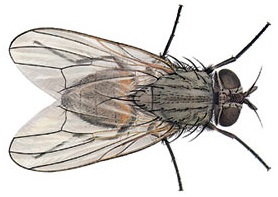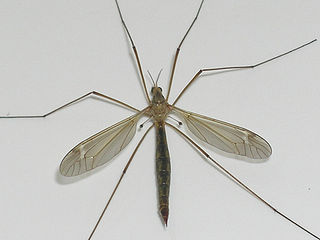

House Flies
fly types, pest control, best fly traps, how to get rid of flies


fly types, pest control, best fly traps, how to get rid of flies
Crane flies are a part of the family Tipulidae. They are very unique looking flies, with a long slender torso, long legs and large wings. They have been known to reach of to 60 millimeters in length, depending on the conditions that surround them. In some areas of the world, the Crane fly is referred to as "Daddy Long Legs", a term that is reserved for a species of spider in the United States. Although they are mostly harmless, their larvae have been known to cause damage to gardens, yards, and in other areas where grass plants commonly grow.
The Crane Fly has a number of different nicknames around the world including mosquito eater and gallinipper. There are over 4,000 different species of crane fly in the world that have been identified at this time, making them the largest family within their genus.

Crane flies have very long legs, and are known to sit in locations that are close to a source of heat or light. It does not take much effort to catch a crane fly, as most of them are rather slow moving and not quick to the jump. They can vary in size, and the determining factor in regards to the size that they grow to is the temperature. More temperate regions will create crane flies that are much larger in size than colder regions. In fact, the crane fly is scarcely found in the colder regions during the winter months but is one of the most prevalent bugs during the summer months in many different regions. Their mouth parts are not capable of piercing, and female crane flies will often have a swollen abdomen, indicating that they are carrying eggs.
A common misconception regarding crane flies is that they have some of the most potent venom in the world, but are unable to deliver it to humans because their mouths are unable to pierce our skin. This urban legend is not true, and is very much like other tales that have been geared toward the spiders that share the nick name "Daddy Long Legs" in the United States. The crane fly is non-venomous and contains no venom.
They are especially common in the Pacific Northwest, which has all of the elements that are required for crane flies to live and breed. Although the winter months may be a little cold for most crane flies, they thrive during the summer months and will often make their way toward light sources and into houses in search of heat and food.
Also, despite the fact that they are often referred to as "mosquito eaters", crane flies do not actually eat mosquitoes. This rumor probably comes from the fact that they look similar to large mosquitoes, and are often confused for them. Crane flies actually feed on nectar and other flower materials. Many crane flies do not eat throughout their short life spans, and instead will mate one time and then die once they become an adult. Their larva, which are commonly referred to as leatherjackets, are commonly found in yards and gardens will they will feed on the plant matter after hatching. They usually will eat the roots first and surrounding vegetation and have been known to cause quite a bit of damage to plants before. Crane fly larvae are considered to be pests, but once they are full grown, they are considered to be more of a nuisance.